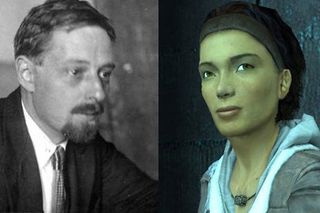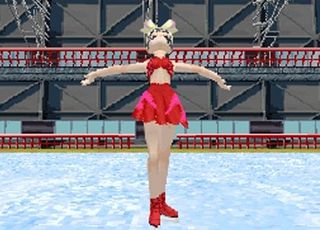Above: This is not female empowerment
Except that perhaps they’re not. We’re in no way saying that the examples listed above are in any way a justifiable, realistic, or healthy way to portray women. They’re nothing but the opposite, and things need to change. But there’s more at play here than old fashioned, lug-headed misogyny on the part of game devs. The reasons for video games’ insulting female characters go much deeper than that. In fact they start way back in the early mists of both game design and narrative structure. All primed and ready? Well here we go…
The beginning
Early games had little care for story. They were simple programs doing simple things for simple (but feverishly addictive) amusement. They were dictated as much by the available technology as design ambition, and as such were often pretty abstract. But regardless they required storylines, simply because of the way we think. As human beings, we understand everything in terms of a causal narrative. Getting up, going shopping, having a poo, we see them all as stories, because of the way we interpret cause-and-effect and the passage of time. Thus, on some level, we need a narrative justification for the things we see happening.

Above: Space Invaders' 300 pagebackstory was scrapped for reasons of ROM space, and left out of Space Invaders Extreme for retro authenticity
So games got stories. But existing out of necessity and tacked on by programmers rather than writers, they were crushingly basic, arbitrary scenarios, based around self-explanatory, mass-appealing concepts. “Aliens are invading! Stop the aliens invading!” “You’ve lost all your shit!” Go and get your shit back!” “The princess has been kidnapped! Go and rescue the princess!” And that last one is where things get interesting.
While that particular plot has become one of the most iconic clichés in gaming, it’s important to note why it’s such a relatable plot. And it’s not simply about adolescent male gamers wanting to pull a posh chick. Instead, it’s a plot element inherent to storytelling throughout human history. Stick with us, it’s about to get a bit academic.

Above: What do dead Russians and future freedom fighters have in common?
In the late 1920s, a Russian chap named Vladimir Propp analysed traditional folk tales and worked out that they could all be broken down into 31 broad archetypal building blocks of story and seven character types. It might sound unbelievable, but he was absolutely right. Check them outhereand then think of any JRPG you’ve ever played. You’ll see what we mean.
And one of the key narrative driving forces Propp found was in the characters of The Princess and Her Father, who usually give the story’s hero whatever task he may have to carry out and provide the reward at the end. If you take The Princess less literally you can see her in every action movie love interest, every romantic comedy heroine, and as Alyx Vance in Half-Life 2 (coupled with Eli, she’s a classic example).
So while the whole “woman as prize” is hackneyed and more than a bit distasteful, it’s unfortunately endemic to almost all storytellingrather thana trait inherent sexism in video games. The problem is really that…
Storytelling hasn%26rsquo;t moved with the times
There are a whole bunch of reasons that outdated and offensive story clichés became cemented into the collective human consciousness. Folk tales always spring out of the aspirations and concerns of the time and place that created them, and after centuries of retelling, those are some pretty tough bonds to cut. The whole idea of a female character being the cause of a heavy redemptive journey even goes back as far as that little apple-scoffing mistake in the Bible.

Above: MISOGYNY BEGINS!
And you absolutely have to factor in the issue that men were the traditional storytellers of primitive cultures, mainly because they actually had the time to be. After a day of hunting and killing, they had bugger all else to do, whereas the women were still busy working their arses off to make sure that the hut didn’t fall apart, no-one starved, and that the kids survived another 24 hours with all limbs intact. See where both gender stereotypes come from now?
The world isn’t like that any more, but after generations of evil witches and seductive sorceresses troubling noble kings and brave knights in fairy tales, our stories are finding it hard to catch up. The problem is that in trying to catch up so quickly, writers are being lazy and clumsy. Thus, when devs make the effort to make games specifically for girls, we get Barbie Horse Adventures and Imagine Babiez. It’s a case of trying too hard while not trying hard enough.

Above: EQUALITY BEGINS!
Basically, in the modern world, we need gender neutral stories and gender neutral games, because it’s offensive to assume there’s any simple collective gender mind-set that can be easily appealed to.But while we currently don’t have many such games, there is a certain gender equality in video game characters, in that…

